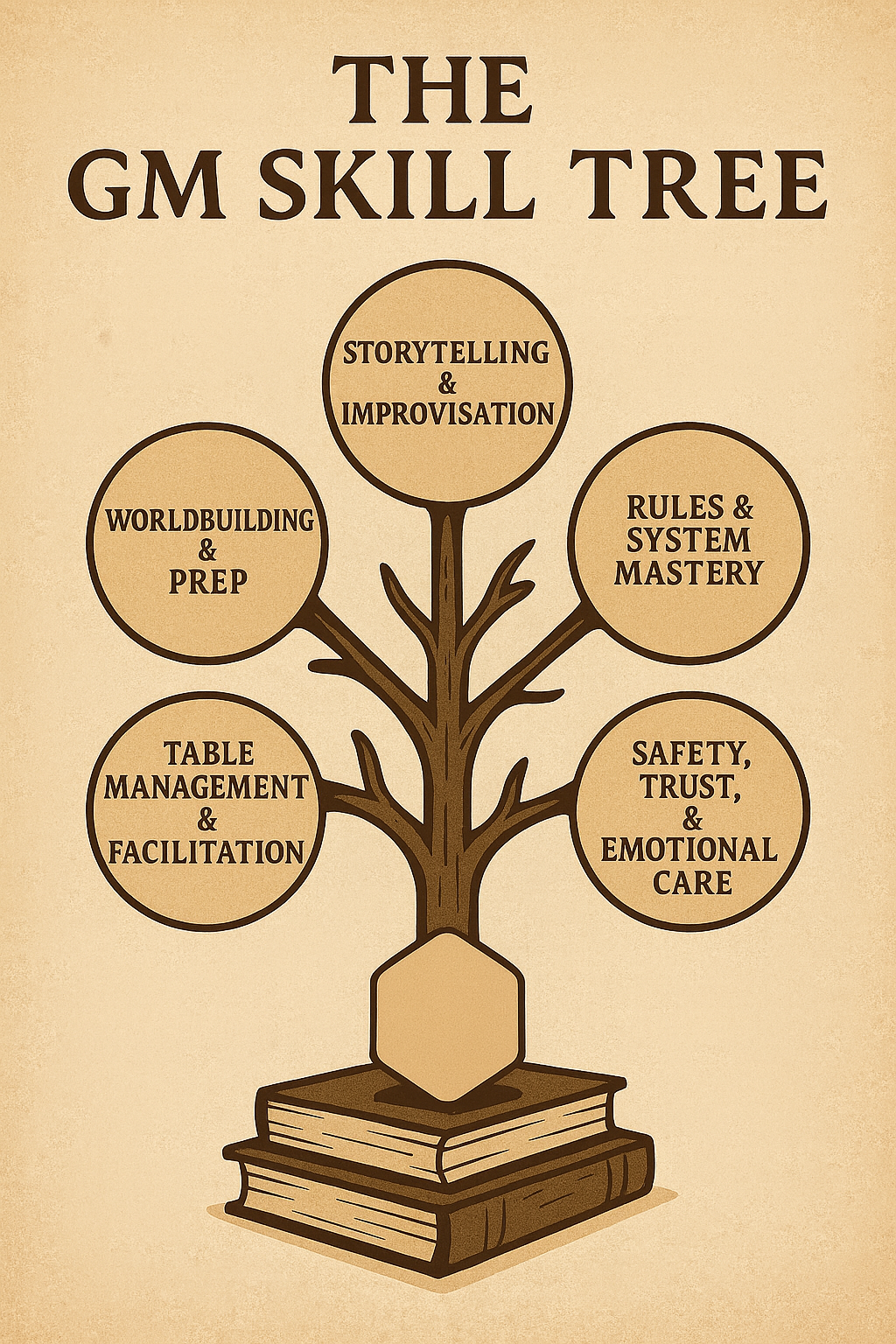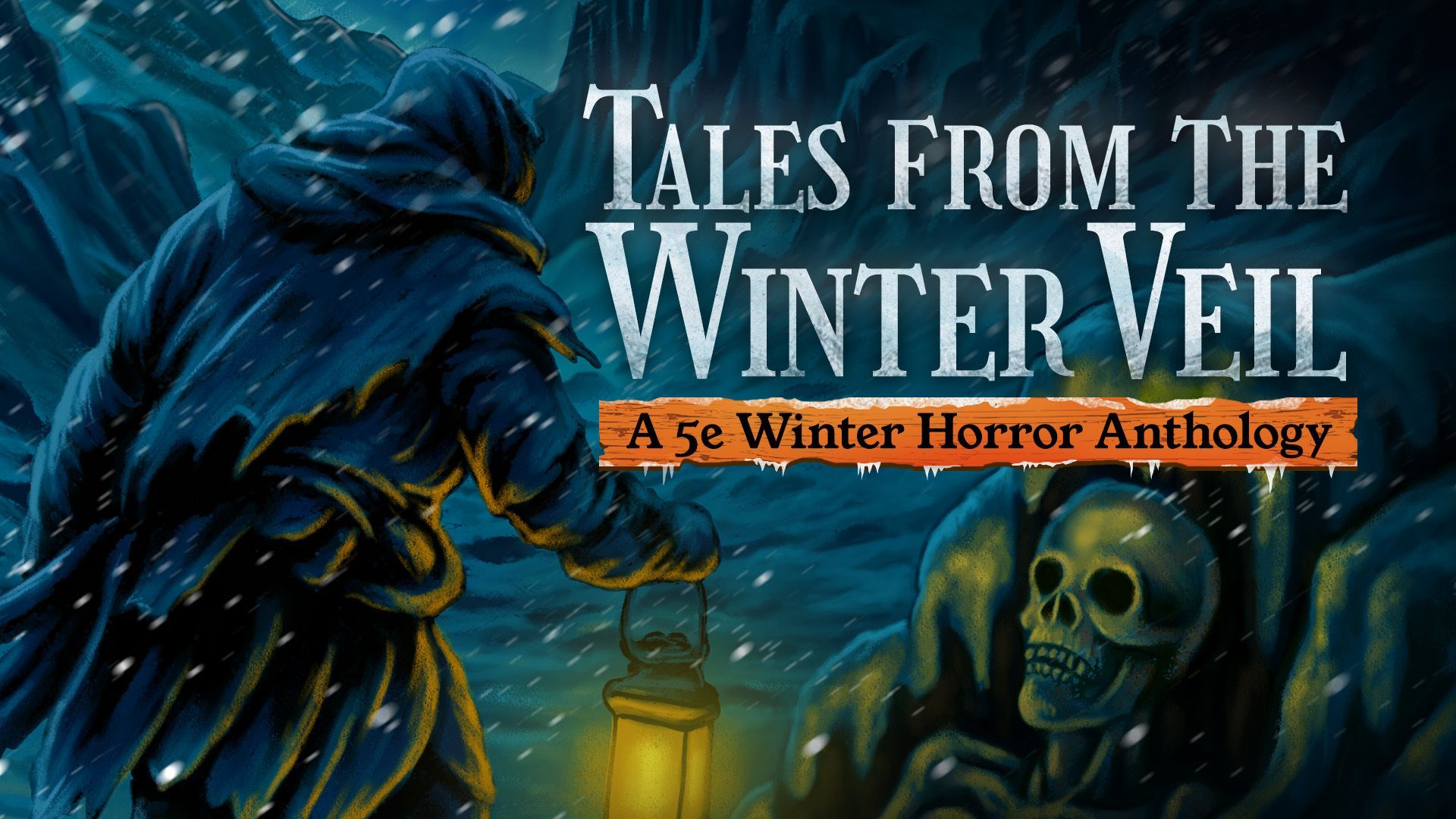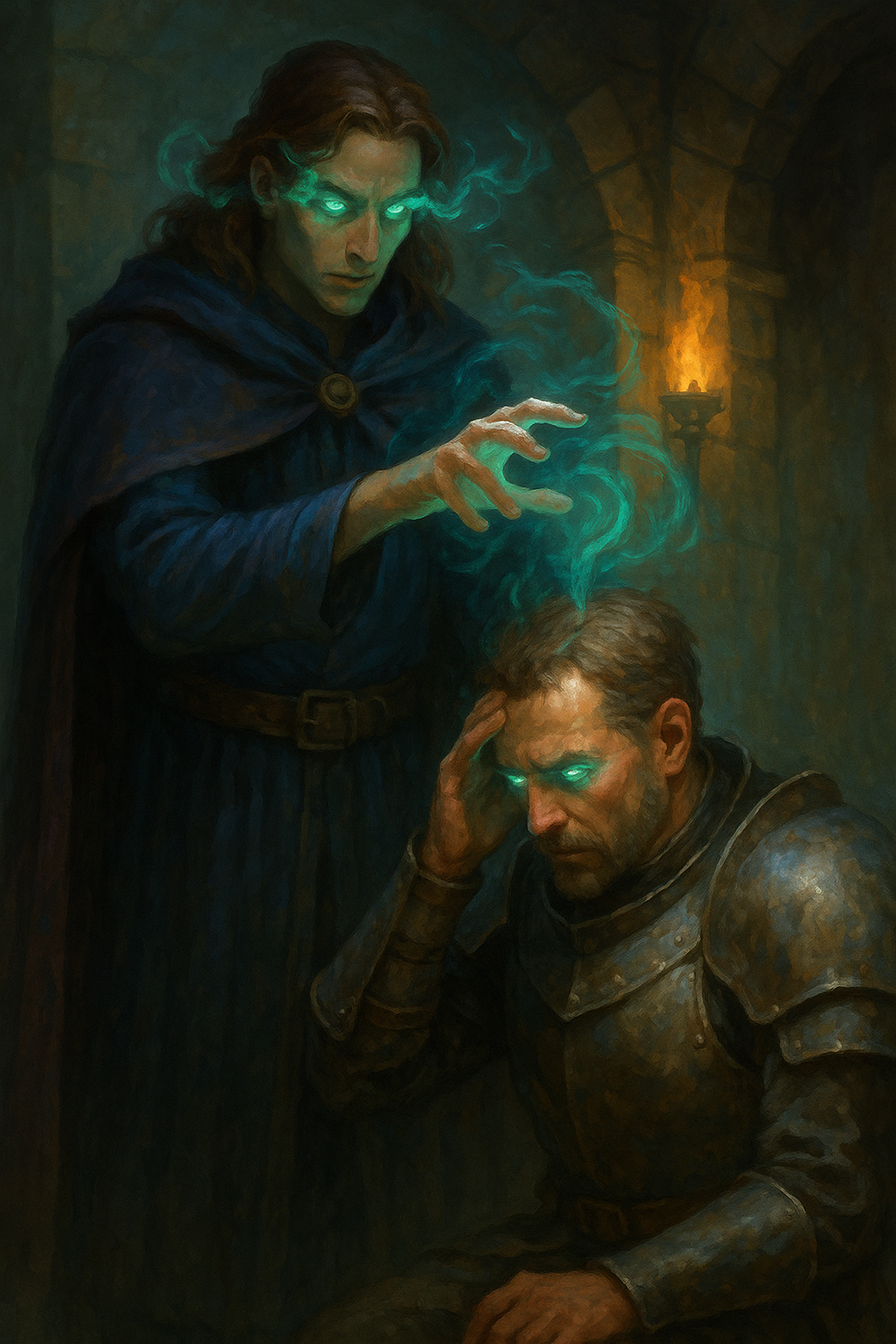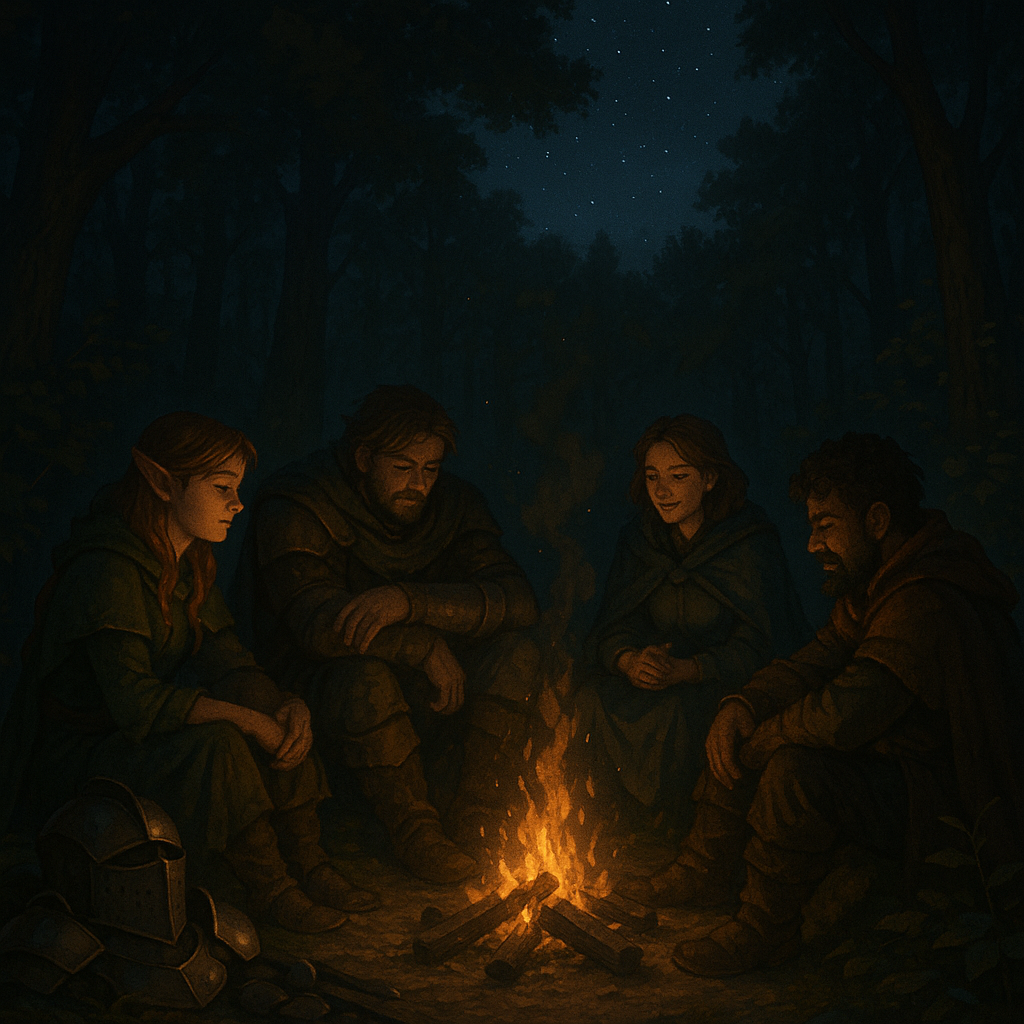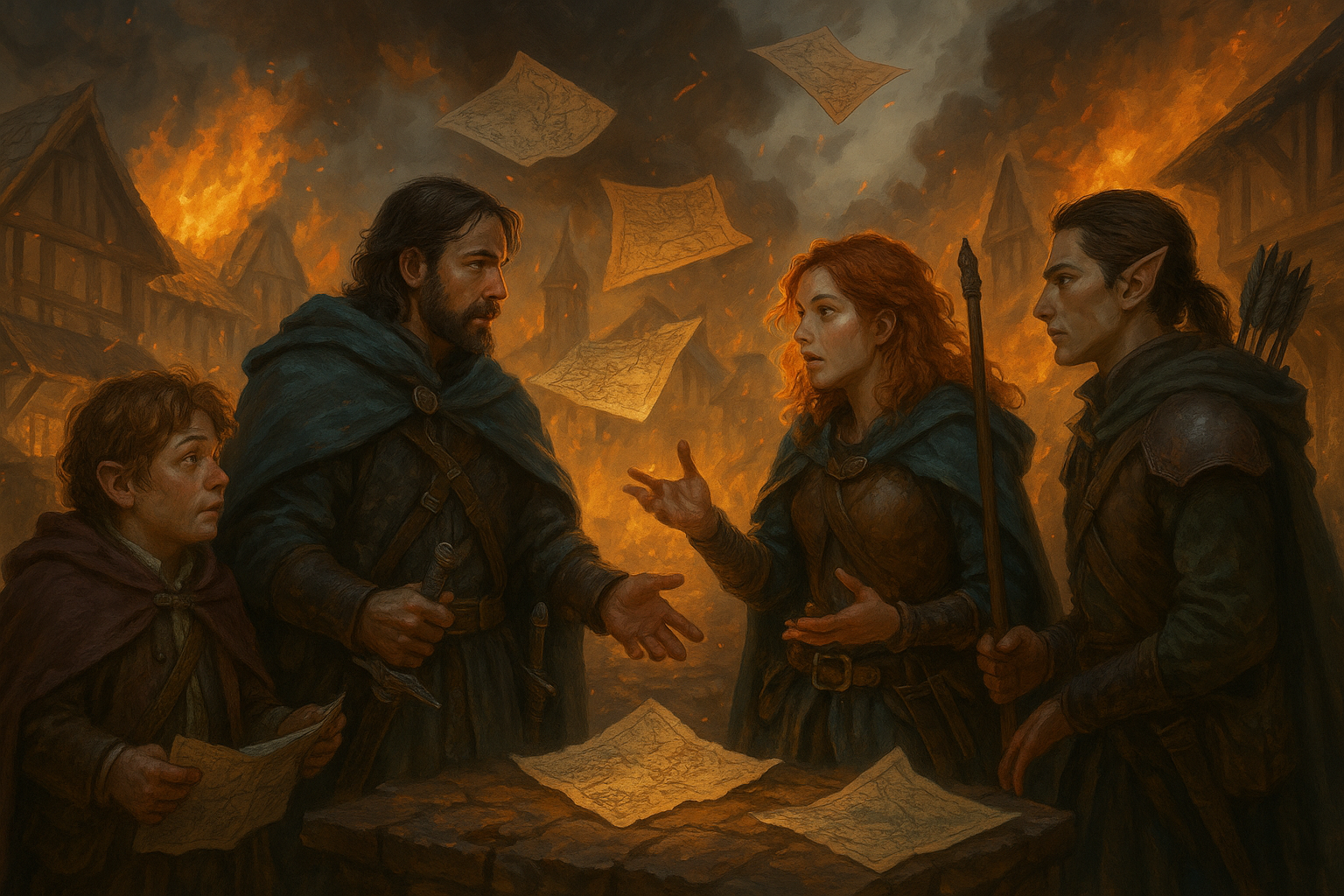Rolling With Purpose: How to Make Every Check Tell a Story
When Rolls have meaning
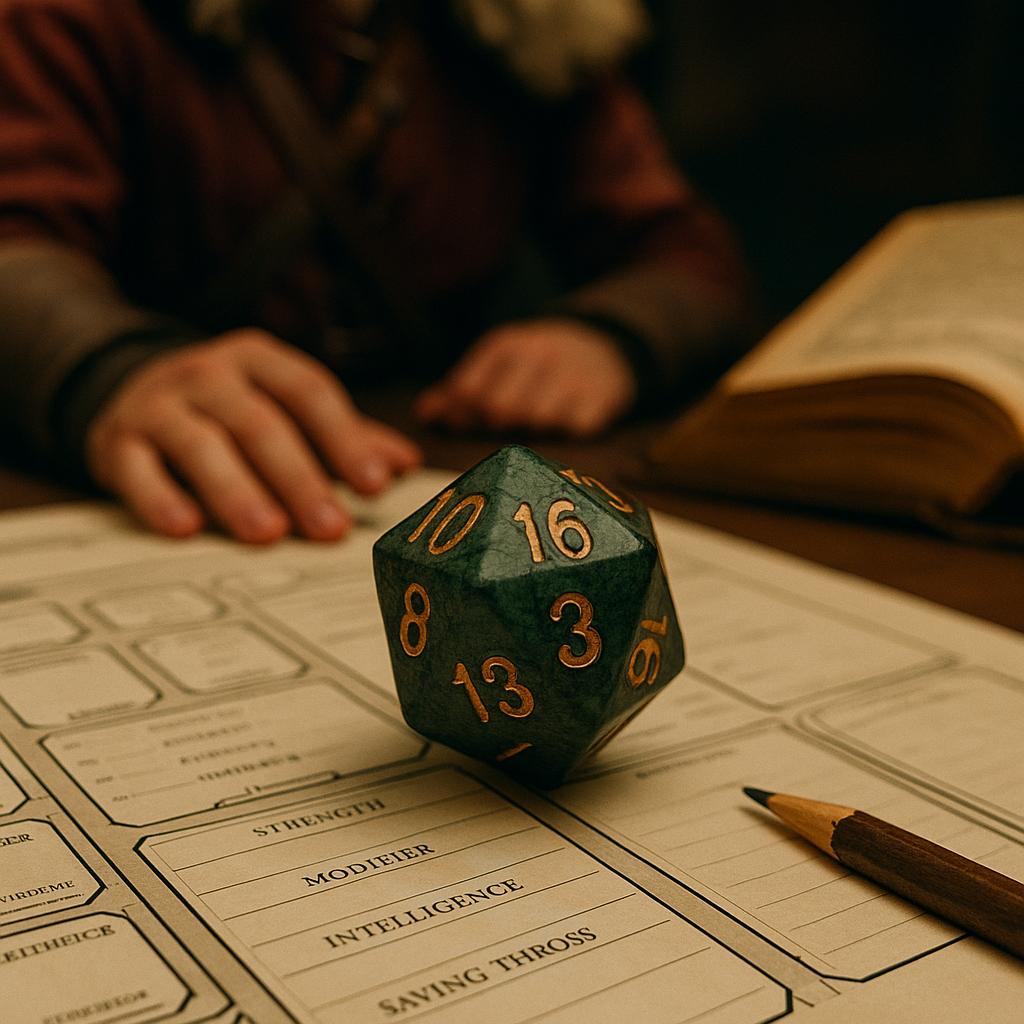
I know today is the culmination of Spooky Season, but since I already did a podcast episode on the topic, I felt that it would be overdoing it. Feel free to go back to my post the previous week and listen/watch my interview with Clint Schierer.
Dear Readers,
There’s a kind of magic in the moment right before a die lands. Time slows, hearts thump, and for a single heartbeat the universe is pure possibility. Will the barbarian’s desperate shove save the wizard from the collapsing bridge? Will the bard’s ill-timed confession melt the duke’s heart—or his patience? That little clatter of plastic is storytelling distilled: uncertainty made tactile.
But far too often, dice become background noise. Players roll because they’re told to. Success means progress, failure means nothing happens. The roll stops being a dramatic beat and turns into bureaucracy.
It doesn’t have to be that way. Every check, every roll, every tumble of chance can push the story forward—if you know how to make it matter.
Today, we’re going to explore how to roll with purpose: how to make every die result a piece of storycraft, every check a moment of revelation.
The Forgotten Language of the Dice
Dice are not math tools; they’re narrative translators. They turn intent into outcome, transforming “I try to pick the lock” into a beat of tension and consequence. The mistake many DMs (and players) make is treating dice as gatekeepers rather than storytellers.
A roll isn’t just a test of success. It’s a test of meaning.
Think of it like this: when the dice come out, the world is about to change. The result—good or bad—should alter something. If it doesn’t, why roll at all?
This doesn’t mean every roll must be life-or-death, but it does mean it should affect tone, pacing, or character development. A failed Persuasion check doesn’t have to end the negotiation—it might reveal the noble’s true fear, or hint at a rival’s influence.
When you start using dice to reveal truths rather than just outcomes, the story deepens.
The Rule of Narrative Consequence
Before any roll, ask one question:
“What happens if they fail?”
If the answer is “nothing,” skip the roll.
This simple principle—borrowed from narrative design in video games and improvisational storytelling—separates filler from drama. Dice should never decide whether the story moves forward, only how.
Here’s an example:
- Meaningless Roll: “Make a Perception check to see if you find the secret door.”
- Purposeful Roll: “Make a Perception check. On a success, you find the hidden latch. On a failure, you find the wrong one—and trigger the mechanism that seals the chamber behind you.”
Both rolls use the same mechanic. Only one creates tension and consequence.
The dice are most powerful when failure doesn’t mean “nothing happens,” but “something interesting happens.”
The Three Pillars of Purposeful Rolling
To give dice emotional gravity, every roll should serve at least one of these three storytelling purposes:
- Revelation: The roll uncovers new information—about the world, a character, or the situation.
- Escalation: The roll raises the stakes, deepens the conflict, or adds time pressure.
- Transformation: The roll changes the state of the world or the characters, even subtly.
When you use these as your litmus test, you’ll find that every die roll—whether it’s a Strength save or an Insight check—adds texture instead of filler.
Revelation: When the Dice Become Eyes
Some rolls expand the player’s understanding of the world. A failed check doesn’t always mean ignorance; it might mean misunderstanding.
Example:
The rogue fails an Arcana check while examining an ancient rune. Instead of saying “You don’t know,” you say, “You’re sure this is a ward of protection. You can almost feel the safety radiating from it.”
Moments later, when the rune explodes, the players realize failure isn’t absence of knowledge—it’s the presence of false confidence.
Revelatory rolls make the dice feel like instruments of discovery. The world responds not as an obstacle, but as a mystery unfolding in layers.
Escalation: When the Dice Tighten the Noose
Every failed roll can make the story more urgent. Time runs short. Enemies close in. The room fills with water.
Escalation doesn’t punish players—it reminds them the world is alive.
For instance, failing a Stealth check doesn’t mean the guard immediately spots them; it might mean the guard pauses mid-step, squinting, muttering, “What was that?” Now tension simmers. Players shift in their chairs. The narrative breathes.
Each roll adds momentum. Dice become a drumbeat—failure quickens the tempo, success gives a brief reprieve.
Transformation: When the World Reacts
A roll that changes the world, even slightly, tells the players their actions matter.
Imagine a Cleric failing to calm a frightened villager. Instead of a dead end, the villager lashes out, breaking the sacred idol the party was protecting. Now the quest isn’t paused—it’s complicated.
Transformation keeps your story alive because the players aren’t stuck repeating rolls until they succeed; the world evolves around them.
When failure transforms, the dice stop feeling adversarial and start feeling alive.
The Performance of the Roll
How you frame a roll shapes its emotional impact.
The difference between “Make a Perception check” and “Your heart races as the room grows silent—roll Perception” is night and day. The latter builds anticipation and signals stakes.
Describe what’s at risk. Describe how it feels. Make the roll cinematic.
This approach makes even mundane checks memorable. Players lean in when they sense drama. They want to know what the dice mean, not just what they say.
The Story Hidden in Numbers
The dice results themselves tell micro-stories. A natural 1 isn’t “you fail”—it’s “the universe conspires against you.” A 20 isn’t “you succeed”—it’s “the impossible just became possible.”
Narrate accordingly:
- Critical Failures: Turn them into narrative pivots. Let them introduce chaos, irony, or unintended consequences.
- Critical Successes: Don’t just double numbers—double impact. Let them open doors, change relationships, or inspire awe.
The best critical results become table legends because they echo character emotion. The barbarian’s reckless swing that collapses the bridge or the wizard’s accidental teleport that lands them in the villain’s study—these aren’t mistakes. They’re stories.
Why Players Roll
Each roll is also a psychological exchange between DM and player. When you ask for a check, you’re saying, “This matters.”
Players roll for three reasons:
- To express intent: “I want to try.”
- To prove competence: “I can do this.”
- To influence the world: “I want this action to have consequences.”
Understanding those motives helps you tailor how you respond to results.
If a player rolls to express intent, let the result define their resolve or hesitation.
If they roll to prove competence, let the success reinforce identity (“The rogue always lands on their feet”).
If they roll to influence the world, let it ripple outward visibly.
This psychological framing turns dice from randomness into recognition.
Reframing Failure: The Myth of “Nothing Happens”
One of the hardest habits to break is equating failure with inaction.
Failure shouldn’t mean the world halts—it should mean it shifts.
When the wizard fails to dispel the curse, the spell might backfire. When the ranger fails to track the orcs, maybe they find something else—a bloodied talisman, a clue pointing to another threat.
Failure is discovery’s twin. Both move the narrative, just in different directions.
And remember: players don’t fear failure—they fear boredom. Give them consequences, not stagnation.
Partial Success and Complications
Binary success/failure systems flatten drama. Instead, embrace the spectrum.
A roll might succeed but with a cost, or fail but with insight. Games like Powered by the Apocalypse thrive on this middle ground—why not borrow it for D&D, Pathfinder, or your homebrew system?
Try phrasing outcomes like this:
- “You succeed, but draw attention.”
- “You fail, but gain a clue.”
- “You succeed, but at a price.”
Partial results give you freedom to adjust pacing and tone. They also teach players that risk is exciting, not paralyzing.
Collaborative Storytelling Through Dice
Dice aren’t there to replace player creativity—they’re there to elevate it.
Before rolling, invite players to describe their intent narratively:
“How do you pick the lock?”
“What’s your approach to calming the mob?”
Their description informs the consequences. If they improvise using their bard’s old performance troupe connections, a failure might mean word spreads that they’re back in town—useful later, maybe dangerous now.
When players co-author the setup, the outcome (win or lose) always feels fair and flavorful.
Mechanics as Emotion
Every game system encodes emotion through its mechanics. D&D’s d20 is about swingy drama—huge highs and devastating lows. Call of Cthulhu’s percentile rolls evoke dread, because every check quantifies the slow erosion of sanity.
As DM, play to your system’s emotional rhythm. In D&D, describe rolls like leaps of faith. In Cthulhu, treat them like gambles against inevitable decline. In Tales from the Loop, treat them as reflections of youthful optimism.
When mechanics mirror emotion, immersion deepens.
The Illusion of Control
Humans love dice because they balance agency with chaos. Players act, but fate decides. That’s storytelling gold.
Lean into that duality. Describe fate like another character at the table—capricious, fickle, sometimes kind. When a roll changes everything, name the shift. “The gods are listening,” or “Luck has turned its face from you.”
This gives randomness mythic weight. It makes even bad rolls feel fated, not futile.
When Not to Roll
One of the boldest moves a DM can make is saying, “You don’t need to roll.”
If the outcome is inevitable, or if success advances the story better than chance, skip it. Let the scene breathe.
Rolling constantly dilutes drama. Like a percussion instrument, dice should punctuate, not dominate.
Save the roll for the moment of maximum uncertainty—and maximum emotional resonance.
Pacing With Probability
Dice can control pacing as effectively as dialogue. Long streaks of success create triumph. A string of near-misses breeds tension. A catastrophic failure shifts tone abruptly.
You can even manipulate pacing through frequency. Rapid, frequent rolls (like during chases) create urgency. Sparse, deliberate rolls (like during negotiation) create gravitas.
Think like a composer. The dice are your rhythm section.
Using Skill Checks as Character Development
A player’s approach to rolling reveals who they are.
A wizard who avoids risk might cast utility spells instead of rolling Arcana checks. A barbarian who always wants to “roll Intimidation” tells you they crave control.
Spot these patterns. Then reflect them back narratively. NPCs might comment, “You always look before you leap,” or “I’ve never met someone who negotiates with a fist.”
When dice reinforce personality, mechanics and story intertwine seamlessly.
Building Player Trust Through Results
Dice carry social weight. If players believe rolls are arbitrary, trust erodes.
Be transparent about stakes and DCs when appropriate. Or narratively foreshadow difficulty (“This lock looks ancient and corroded”). Consistency builds faith.
When players know every roll matters—even the disastrous ones—they stop fearing the dice. They start anticipating them.
That’s when your table hums with excitement instead of anxiety.
Skill Challenges as Story Engines
Multi-roll skill challenges (popularized in 4e D&D and adapted widely since) are excellent storytelling tools—if you treat them like scenes, not math puzzles.
Each roll should shift the situation. Instead of “you need five successes before three failures,” think “each roll adds a beat.” Success brings progress; failure brings consequence.
For example, escaping a collapsing tomb:
- A successful Athletics roll clears a fallen beam.
- A failed Acrobatics roll causes rubble to fall, splitting the group.
- A successful History check recalls a hidden passage.
- A failed Perception check means someone’s left behind.
By the end, the outcome feels lived, not calculated.
When Dice Reflect Theme
Good GMs use dice to reinforce theme.
In a grimdark campaign, rolls rarely yield unblemished success—every victory costs something. In a heroic saga, fate might bend toward the bold.
Think about your campaign’s tone, and let it influence how you interpret results. The same 12 on a Persuasion check could be:
- A soft failure in a cynical noir (“He listens, but only to see what you’ll reveal.”)
- A heroic near miss in high fantasy (“You see the doubt flicker—keep pushing!”).
Theme shapes interpretation, not the numbers themselves.
Encouraging Descriptive Rolls
Invite players to describe not just what they roll, but how it looks.
Instead of “I roll Persuasion,” try “I step forward, my voice steady but my eyes betraying my fear.”
Then let that description inform advantage, disadvantage, or the consequences of success. This rewards creativity and transforms mechanical actions into cinematic ones.
Soon, rolling the dice will feel like acting a scene, not filling a form.
The Power of Shared Outcomes
When multiple players roll together—say, everyone making Perception checks—consider narrating the results collectively.
“As you search the ruins, it’s the cleric who spots the sigil, but the rogue notices the faint footprints leading away. Together, you piece it together: this wasn’t a tomb—it was a prison.”
Shared rolls reinforce party cohesion. Success feels collective, and even low rolls contribute flavor.
Improvising From Results
The best GMs improvise forward. When a roll surprises you, treat it as inspiration, not disruption.
Ask yourself:
“What does this result want to say about the world?”
A critical failure on a Nature check might suggest local flora behaves oddly—hinting at hidden magic. A surprisingly high Deception roll might mean the liar’s story spreads faster than intended, creating a new rumor subplot.
Dice aren’t chaos; they’re prompts. Follow where they lead.
Turning Mechanics Into Memory
Every iconic campaign moment likely began with a die roll. “Remember when you rolled a 1 on the bridge?” “Remember that nat 20 that saved the kingdom?”
What makes those moments stick isn’t the math—it’s the meaning attached to it. The numbers became symbols of emotion.
Your job as DM or player is to spotlight those moments, celebrate them, and build on them. Give failures callbacks, turn successes into legends. When dice results echo through your campaign, they become mythology.
Epilogue: The Story in the Roll
Dice are not there to tell you what happens. They’re there to ask, what happens next?
They are the heartbeat of tabletop play—the punctuation marks in our shared epic. Every roll is a whisper from fate, every modifier a prayer.
So the next time you reach for your favorite d20, pause. Let the table go quiet. Feel the weight of the moment. Then roll—not for success or failure, but for story.
Because every time you roll with purpose, you’re not just playing a game. You’re weaving myth.
Until next time, Dear Readers...

















